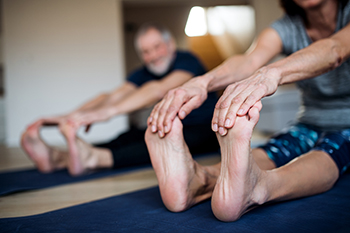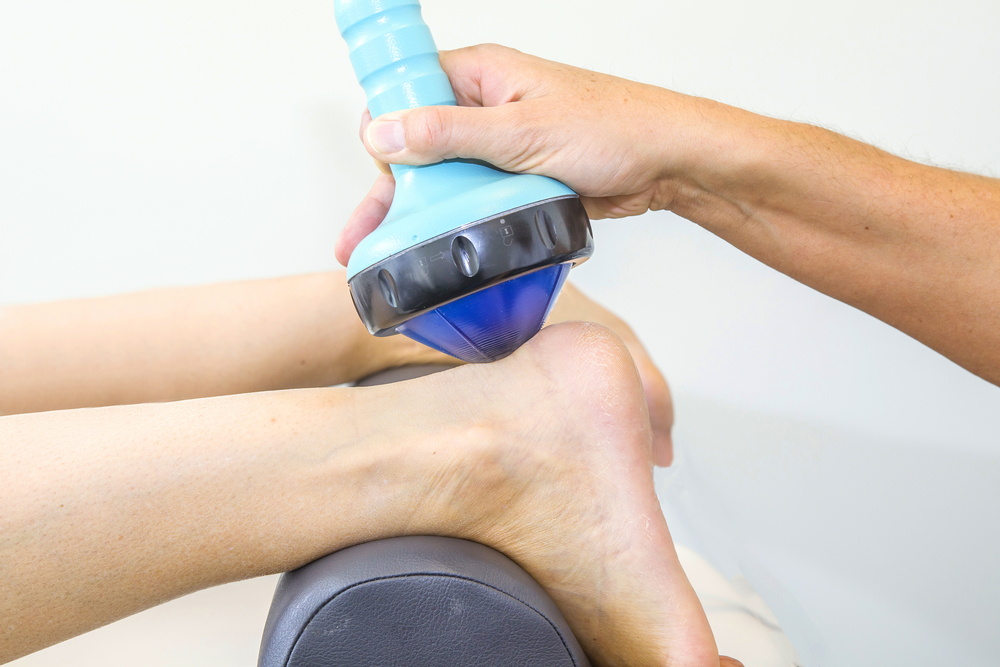 The feet are often referred to as the foundation of the body. Unfortunately, they can undergo stress throughout the day from completing daily activities. Research has shown it can help to keep the feet limber when stretching techniques are frequently performed. Many stretches take a few minutes to complete, however the benefits are worth the wait. When the calves are stretched it often positively affects the heel and the bottom of the foot and their flexibility. This can be accomplished by sitting down with your feet stretched out before you, slightly grabbing the toes if you are able, all while keeping the toes in an upward position. then you can rest and repeat. Another great stretch is accomplished when a towel is placed around the feet, and you gently pull the feet toward you. Many patients enjoy the benefits of performing a foot roll. This is done by rolling the sole of the foot on a tennis or golf ball, and an effective stretch can be felt in the entire foot. There are numerous foot stretches that can be practiced daily, and it is suggested that you consult with a podiatrist if you would like to learn more on how to implement new stretches into your daily routine.
The feet are often referred to as the foundation of the body. Unfortunately, they can undergo stress throughout the day from completing daily activities. Research has shown it can help to keep the feet limber when stretching techniques are frequently performed. Many stretches take a few minutes to complete, however the benefits are worth the wait. When the calves are stretched it often positively affects the heel and the bottom of the foot and their flexibility. This can be accomplished by sitting down with your feet stretched out before you, slightly grabbing the toes if you are able, all while keeping the toes in an upward position. then you can rest and repeat. Another great stretch is accomplished when a towel is placed around the feet, and you gently pull the feet toward you. Many patients enjoy the benefits of performing a foot roll. This is done by rolling the sole of the foot on a tennis or golf ball, and an effective stretch can be felt in the entire foot. There are numerous foot stretches that can be practiced daily, and it is suggested that you consult with a podiatrist if you would like to learn more on how to implement new stretches into your daily routine.
Why Stretching Is Important for Your Feet
Stretching the feet is a great way to prevent injuries. If you have any concerns with your feet consult with one of our podiatrists from Canonsburg Podiatry Associates. Our doctors will assess your condition and provide you with quality foot and ankle treatment.
Stretching the Feet
Stretching the muscles in the foot is an important part in any physical activity. Feet that are tight can lead to less flexibility and make you more prone to injury. One of the most common forms of foot pain, plantar fasciitis, can be stretched out to help ease the pain. Stretching can not only ease pain from plantar fasciitis but also prevent it as well. However, it is important to see a podiatrist first to determine if stretching is right for you. Podiatrists can also recommend other ways to stretch your feet. Once you know whether stretching is right for you, here are some excellent stretches you can do.
- Using a foam roller or any cylindrical object (a water bottle or soda can will do), roll the object under your foot back and forth. You should also exert pressure on the object. Be sure to do this to both feet for a minute. Do this exercise three times each.
- Similar to the previous exercise, take a ball, such as a tennis ball, and roll it under your foot while seated and exert pressure on it.
- Grab a resistance band or towel and take a seat. If you are using a towel, fold it length wise. Next put either one between the ball of your foot and heel and pull with both hands on each side towards you. Hold this for 15 seconds and then switch feet. Do this three times for each foot.
- Finally hold your big toe while crossing one leg over the other. Pull the toe towards you and hold for 15 seconds. Once again do this three times per foot.
It is best to go easy when first stretching your foot and work your way up. If your foot starts hurting, stop exercising to ice and rest the foot. It is advised that you then see a podiatrist for help.
If you have any questions, please feel free to contact our office located in Canonsburg and McMurray, PA . We offer the newest diagnostic and treatment technologies for all your foot care needs.





